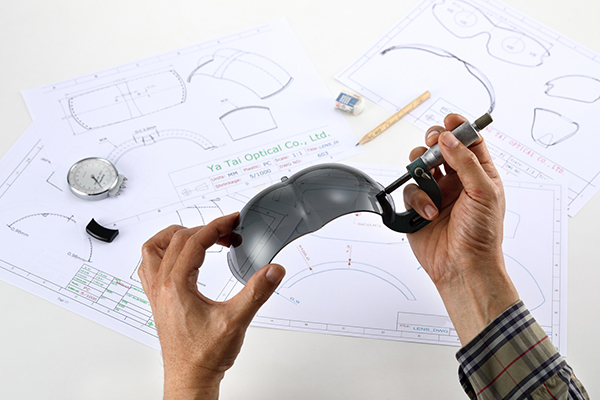
Optics, the science of light and its interaction with matter has been pivotal in advancing technologies across industries. From medical imaging and astronomy to telecommunications and consumer electronics, optics has revolutionized how we see and interpret the world. Today, innovations in optical technology are unlocking new possibilities in precision instruments, imaging systems, and advanced applications. With the emergence of cutting-edge tools such as aspherical mirrors optics and CNC-polished aspheres, optical solutions are becoming more efficient, accurate, and versatile. This article explores the key developments in optical innovation and their transformative potential.
The Role of Optics in Modern Technology
Optical science has evolved rapidly, finding critical applications in healthcare, aerospace, robotics, and augmented reality sectors. In healthcare, optical technologies power diagnostic tools such as endoscopes, optical coherence tomography (OCT) scanners, and laser surgery devices. In space exploration, telescopes with highly polished optics capture light from distant galaxies, providing invaluable insights into the universe. Similarly, optical fiber networks have become the backbone of global communications, delivering high-speed internet and data transmission with minimal signal loss.
As technology evolves, industries demand higher precision, miniaturization, and efficiency from optical components. These demands have spurred innovation in lens manufacturing, mirror polishing, and advanced optical coatings, making way for next-generation devices with enhanced performance.
Aspherical Optics: A Game-Changer
Traditional spherical optics are widely used for lenses and mirrors but have limitations such as spherical aberration. This phenomenon occurs when light rays passing through the edges of a lens do not converge at the same focal point as those passing through the center, resulting in blurred or distorted images. Aspherical optics, designed with non-uniform curvature, correct these distortions and allow for sharper images. Aspherical lenses and mirrors are now essential in everything from camera systems and microscopes to space telescopes and virtual reality headsets.
One of the key areas where aspherical optics shine is in compact systems that demand high precision. For example, aspherical mirrors are used in telescopes and laser systems to enhance image quality while reducing weight and size. These advancements improve performance and open the door for innovative applications such as lightweight optical systems for drones and autonomous vehicles.

CNC Polished Aspheres and Precision Optics
Manufacturing aspherical optics requires advanced techniques to achieve precise surface quality for high-performance applications. This is where CNC polished asphere comes into play. CNC (Computer Numerical Control) technology uses automated machines programmed to polish optical surfaces with micron-level precision. This ensures that the finished aspheres meet strict tolerances and deliver exceptional optical performance. The CNC process also allows for repeatability and scalability, making it ideal for producing lenses and mirrors in commercial quantities without compromising quality.
CNC-polished aspheres are widely used in high-end optical devices, including telescopes, cameras, and laser systems. Their superior surface finish and accuracy improve imaging performance and reduce aberrations, even in challenging environments. CNC technology has also enabled the production of custom optics, allowing engineers to design lenses and mirrors tailored to specific applications.
Applications of Optical Innovation
Medical Imaging and Surgery
Optical innovations have transformed healthcare, enabling non-invasive diagnostic tools and advanced surgical procedures. Technologies like OCT rely on high-precision optics to capture detailed images of biological tissues, aiding in the early detection of diseases. Similarly, laser eye surgery uses specialized aspheric lenses and mirrors to reshape the cornea accurately.
Aerospace and Astronomy
Space exploration relies heavily on optical systems to observe distant celestial bodies. Modern telescopes, such as the James Webb Space Telescope, use a combination of CNC-polished aspheres and aspherical mirrors to capture high-resolution images of the cosmos. These innovations allow scientists to explore the universe with unprecedented clarity and depth.
Consumer Electronics and Photography
Cameras, smartphones, and augmented reality devices all benefit from advances in optical innovation. Aspherical lenses help improve image sharpness while reducing lens size, making them ideal for compact devices. The ability to manufacture high-quality optics efficiently using CNC polishing has also made advanced camera technology more accessible to consumers.
Automotive and Autonomous Systems
Optical sensors are crucial in autonomous vehicles and advanced driver-assistance systems (ADAS). Lidar sensors, which use lasers to detect objects and measure distances, rely on high-precision optics for accurate performance. Aspherical lenses and mirrors improve the reliability of these systems, enhancing vehicle safety and enabling fully autonomous driving shortly.
The Future of Optical Innovation
Optical innovation is an ever-evolving field driven by the need for better imaging, communication, and sensing technologies. As industries push the boundaries of what is possible, optical systems must continue improving in efficiency, size, and performance. Advanced manufacturing techniques like CNC polishing will play a pivotal role in meeting these demands, enabling the production of more precise and complex optical components.
In addition, custom optical solutions are expected to grow in popularity. Engineers and designers are increasingly turning to custom aspheric lenses and mirrors to meet the unique requirements of specialized applications. These innovations will likely pave the way for breakthroughs in optics, from next-generation displays to quantum communication systems.
Conclusion
The future of optics lies in the seamless integration of innovation and precision. With advancements in aspherical optics and CNC-polished components, industries can unlock new possibilities across healthcare, aerospace, electronics, and transportation. As optical technologies become more sophisticated, they will continue to drive progress and revolutionize how we perceive and interact with the world. By harnessing the power of light through cutting-edge optics, we are entering an era of limitless potential where precision and creativity converge.







